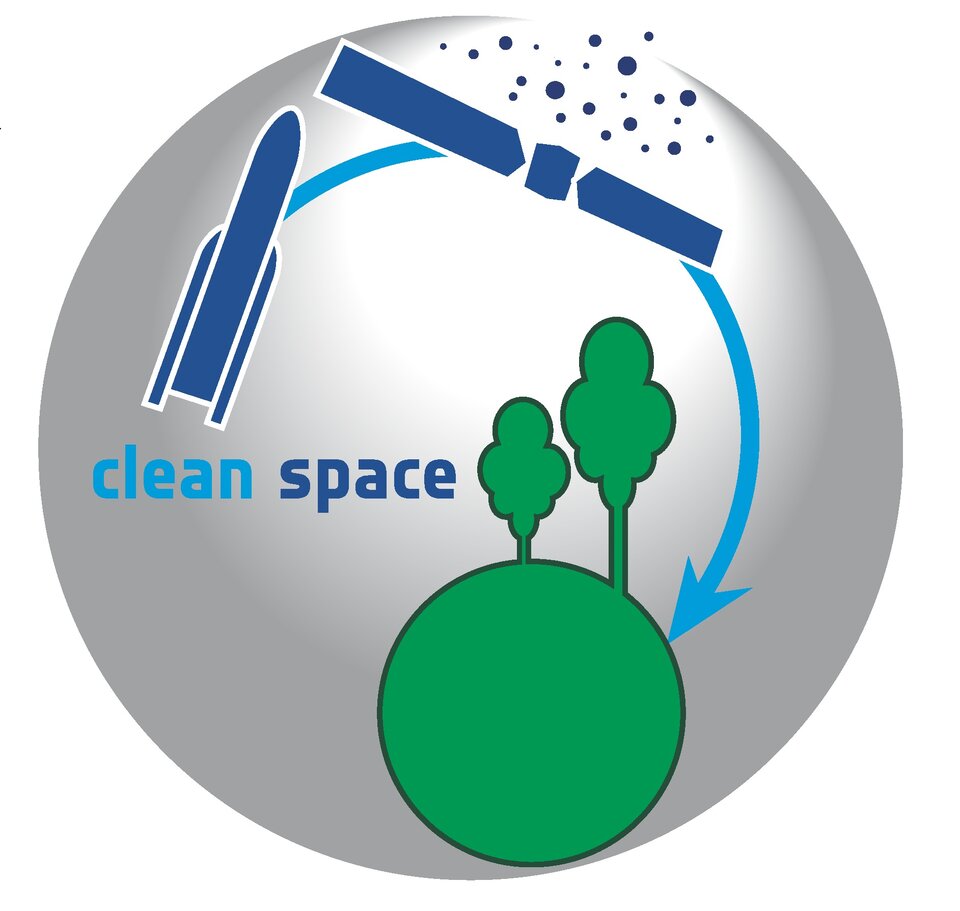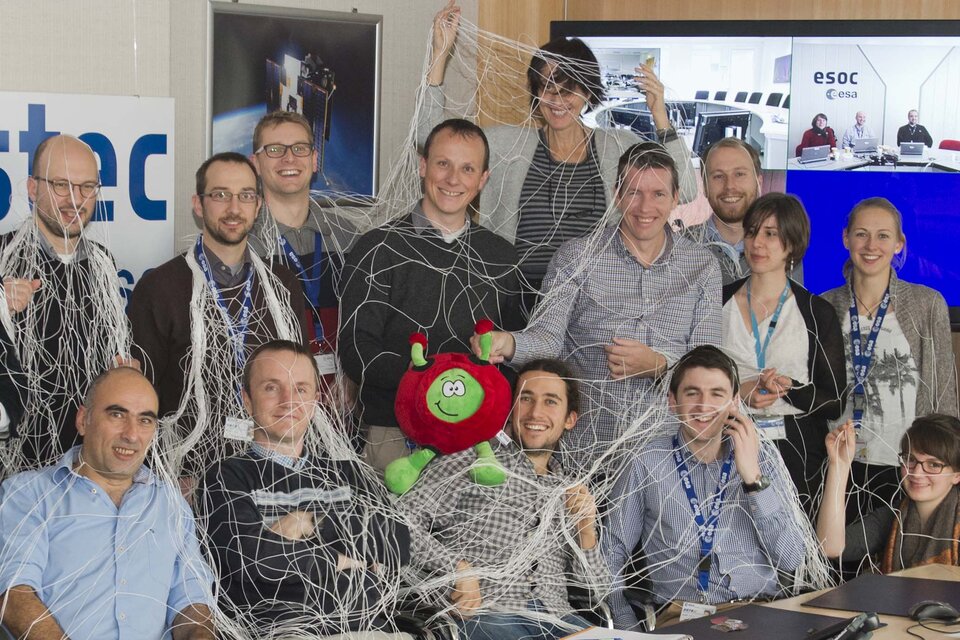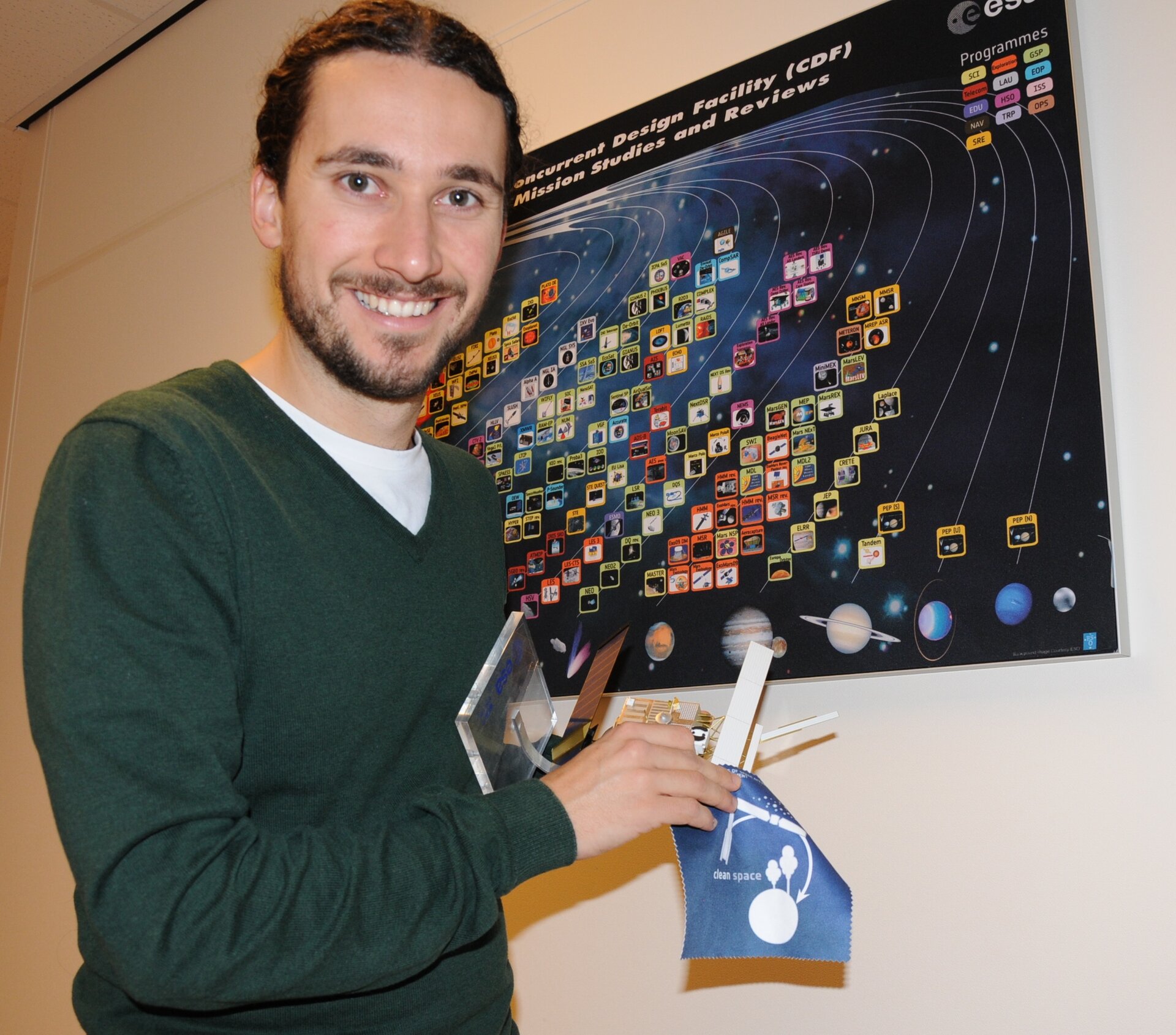Finding ways to overcome barriers: Tiago Soares interview
As Clean Space grows in scope and scale, it is Tiago Soares’ task to keep things cohesive, ensuring the various teams working on the initiative remain interconnected. His involvement goes back some years, starting five years ago as part of a team asking a deceptively simple question: what would a greener satellite look like?
What role do you play in Clean Space?
My role is as a system engineer for the initiative, which means having a comprehensive technical overview for all the activities involved. This also means creating and stimulating the coordination between the different activities and project teams to promote cross fertilisation, as well as participating in Clean Space’s various programmatic and strategic decisions.
What are the key challenges involved?
We are trying to organise Clean Space as a technical initiative in an innovative cross-cutting way, with a strong collaborative dimension. This ends up being challenging because some traditional procedures have to be adapted to this new approach. We have to find ways to overcome barriers to create a good cooperative environment across the various areas of expertise and technical activities.
The thing with Clean Space is that we’re trying to put together industrial partners, the holders of technical expertise and end users in other ESA programmes.
Something that is very stimulating is to work directly with industry and try to find grounds to share our visions, to harmonise the work being done and trying to make progress together. I think that working with industry is one of the strengths of Clean Space because it is a way to get stronger support from delegations and end up with more concrete goals in our technological roadmaps.

How did you first get involved?
Well, actually I was there from the very first second! I began working on the environmental aspects of space missions back in 2009 when we started the ‘Ecosat’ design study in ESA’s Concurrent Design Facility, with the aim of designing a greener satellite – whatever that meant. I was a system engineer for that study, where we started looking for the first time at deorbiting options, life cycle assessment, green technology and so on at a very high level. It was difficult because nobody knew what an environmental footprint really meant and how it could be evaluated.
Then, months after we finished that study, there was a request from our Directorate of Launchers to evaluate the environment footprint of Europe’s launcher family. We began by applying what we learnt from the Ecosat study and started working with environmental experts to find a good answer to this question.
At some point during this process we needed to involve industry, and we invited them to a workshop where we explained what we needed to do. I can still remember when the name ‘Clean Space’ first came up during this workshop, back in April 2011. The work on launchers continued but the seed of Clean Space was planted in our head and kept on growing… One day there was a call for ideas for the Agency’s Agenda 2015 – ESA’s future to-do list. A group of us proposed the Clean Space initiative to ESA’s Director-General, and this is how everything started!
Clean Space became one of the 10 major actions of Agenda 2015, and we started working on the initiative’s technology roadmaps – involving most of the experts that are still working with us today. It was a special time when we started to collaborate on Clean Space because we were working on a new project which we believed, and were so excited we were working extra time without any budget allocation. I believe it was this energy that made Clean Space possible, and successful.
Since then I have been working on the initiative almost full time.

What is your opinion of Clean Space overall?
It’s a hard question to answer because I’m so involved I am hardly objective. But when I look back I’m so glad to have been given this opportunity to build something like Clean Space, especially together with this team.
How do you explain the initiative to non-technical friends or family?
In that sense, Clean Space is very appealing to non-technical people because they also care about the subjects motivating the effort. For example, the case of the mission to capture and deorbit space debris is something that people can identify with – I have friends asking about our space garbage truck, and when it’s going to go.
So it is very easy to transmit what Clean Space is without going into the technicalities. I simply say we are working on a programme to develop technologies for reducing the environmental impacts of space activities in orbit, and also on the ground. This means we try to get rid of substances that pollute the terrestrial environment and also find ways to ensure we don’t leave garbage in space either. That’s basically the same wording that we use in our normal discussions with colleagues as well.

How did you get your start in the space business?
It’s all I’ve wanted to do since I started university. When I finished my studies I went to ESA as a trainee, and ended up staying.
What has been your biggest surprise from working here?
The space sector is quite a small world at the end of the day. But coming out of university I was surprised by the complexity of the political and strategic issues that are driving most of the decisions being made, especially in an agency like ESA where so many different countries are working together. I found this extremely interesting and I’m always trying to understand this dynamic better and better. I believe that space is opening new opportunities for cooperation between nations.
How do you see Clean Space evolving in future?
Clean Space has only existed for two and a half years so far. In that time it has been constantly evolving and growing. I believe that Clean Space will represent the start of several projects that will turn the ideas that with started with into tangible realities. This initiative has ended up planting ideas all over the rest of the space sector. We’re seeing new ideas related to Clean Space being implemented in other agencies, across industry and in academia.
Clean Space also paves the way for other ESA initiatives to be built in future. I think we are defining an example that will allow other ideas to come up for implementation across the Agency.
So I see Clean Space becoming a multitude of branches. It will still grow, maybe not as a single programme, but possibly in a multitude of initiatives and projects. And a big challenge will be to keep its community collaborating and communicating.


